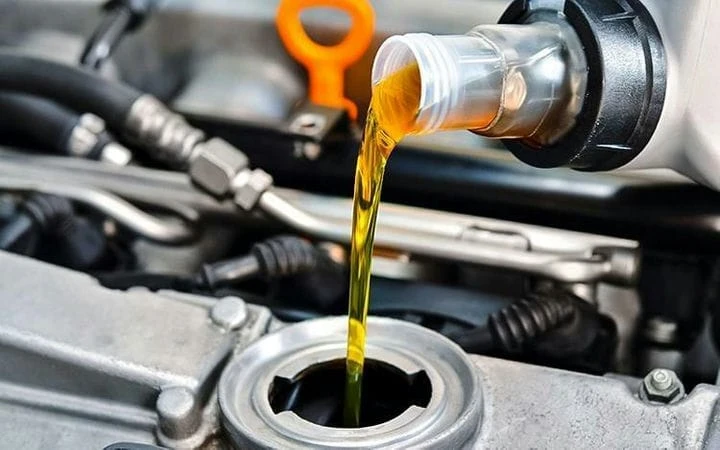Myths that our motorists still believe in
Yes folks, stereotypes are a powerful thing. Believe it or not, most of those who drive a car stubbornly go on about rumors and unfounded tales. To understand what I'm talking about now, let's read below all those myths that I have put together. At the same time, I will try to dispel them and prove that not everything that is considered by the people to be the truth is such. Come on, let's not delay.
If you fill in gasoline with a higher octane number, then the car will drive better.
Many people think so, and for more than one year. For example, an automaker prescribed to fill a certain model only with AI-92 gasoline, but the owner decided that more expensive is better and constantly fills only AI-95.
Guys, this can be partly justified, but only in cases where the engine of your car has a high degree of boost or compression, as well as a turbocharging system. And at the same time, in such cases, the manufacturer indicates in the technical specifications that the octane number of gasoline should not be lower, for example, AI-95, or even AI-98. There are also designations AI-95/98, which, as it were, hints – the higher the octane number, the better.
In all other cases, refueling with high-octane fuel is just money down the drain. For your dynamics will not improve, nor fuel efficiency. Only the motor will work more evenly and its start-up will be a little easier in the cold season. So think if it's worth it.
Very well this topic was revealed by the experts of Autoreview in one of their research-tests. If anyone is interested, you can find it. The article deals with three cars: KIA Seed, BMW 118i (turbo) and Toyota GT86. So, Sid's acceleration dynamics and fuel efficiency have not changed much. In a turbocharged BMW, the dynamics worsened during the transition to the 92nd, and when filling with the 98th, it did not change relative to refueling with AI-95 gasoline. And only the Toyota GT-96 with its highly accelerated and high-revving boxer “atmo” managed to win back half a second in acceleration to 100 km / h when using the AI-98 instead of the 95th. Fuel consumption has not changed much. Draw your own conclusions.
If I buy a crossover, I will conquer off-road in the same way as on an SUV
Unfortunately, the level of automotive culture in our country is at a very low level, and many perceive the car as nothing more than a means of transportation – on a par with household appliances such as a refrigerator or a washing machine. This is very unpleasant, but nothing can be done – people now have other interests, and the car just has to carry them, and it must also be well equipped.
So what am I bringing all of this up to? Moreover, many do not understand the concepts and often confuse an all-terrain vehicle with an SUV. In many of my publications, I share these concepts, but in the comments at the same time they write to me that I am a narrow-minded person and cannot distinguish an SUV from an SUV.
Guys, now I will explain clearly. An all-terrain vehicle is a car that can handle an asphalt road, a country road, and a summer cottage. The SUV is a car of a wider orientation and, in addition to roads, is also able to move around the area with their complete absence. This is facilitated by an honest four-wheel drive, reduction gear, frame and so on.
That is why the concept of “off-road vehicle” can easily include off-road vehicles. Meanwhile, crossovers can no longer be considered “off-road vehicles”, because a load-bearing body is not the richest off-road arsenal and, often, a primitive all-wheel drive implemented through an electromagnetic clutch.
Thus, a person who sees a “jeep” in front of him buys such a car and then is disappointed that he gets stuck somewhere in a deep puddle and viscous mud. But guys, you didn't buy a Jeep, but just a crossover. Not everything that looks like an SUV is one. Therefore, enlighten yourself, read more, and then you will soberly assess both your capabilities and the capabilities of the purchased car.
It is better to fill in cheap oil, but change it more often than expensive, but less often.
Here, by the way, is a very interesting topic for discussion. Now people don’t have much money, but those who have a desire to take care of the car’s engine, in some cases, put forward the version that it’s better to fill budget oil in the internal combustion engine, but change it more often – for example, once every 5 thousand kilometers. Whereas more expensive oil can not be changed every 15 thousand kilometers, because it all depends on the composition.
Here you can answer like this: both yes and no. Well, let's say, if the oil is really good, as well as the oil filter, then you really can not change it even after 15 thousand, but travel, for example, up to 20. But guys, this is all strictly tied to operating conditions – to the quality of gasoline, the quality of roads, driving style and so on. In Europe, indeed, 20 thousand kilometers from replacement to replacement are acceptable, but if you don’t stand on warm-up for half an hour and don’t constantly torment the car in traffic jams, and also don’t allow the internal combustion engine to often work at its limit, refuel with high-quality gasoline. Then, yes, you can.
Where are our conditions? One only gasoline what is worth. But yes, it’s better to pour high-quality oil and still stop at standard replacement intervals of 10-15 thousand kilometers – this is with unfanatic driving in the “slipper to the floor” mode. If you like to drive, then change every 7-8 thousand. It makes no sense to change good oil before.
But the statement that cheap oil is better, but more often to change, for the most part, is incorrect. For such an oil, during the operation of the internal combustion engine, can emit harmful decomposition products, as a result of which carbon deposits form inside the motor, coking occurs and friction between the parts deteriorates. And this can happen even with optimal viscosity, composition and normal operation. Therefore, it is better to take high-quality oil and change it every 7-15 thousand kilometers (depending on operating conditions) than cheap slurry – this way the motor will last a really long time.
Year of manufacture is more important than mileage
Now some people think that the later the car is released, the more preferable it is to buy in the secondary market, even despite the solid mileage. Meanwhile, older cars with lower mileage are falling away.
Guys, this is a very stupid misconception. Well, you take, relatively speaking, a Hyundai Solaris with a mileage of 120,000 km and a 2017 release instead of the same Solaris of 2016 with figures of 70,000 km, and what will you gain?
Mileage is more important, because the smaller it is, the higher the safety of the main components and assemblies. Yes, let the model be in pre-style, but it will be really more whole and will still travel a large number of kilometers. And if you take a fresh car, but with high mileage, then it’s time to think about it, because maybe it was in a taxi. In this case, after the purchase, an unpleasant surprise awaits you at the service in the form of wear on the suspension, transmission, internal combustion engine and an amount of tens or even hundreds of thousands of conventional units.
A new car is better than the one with mileage
A very relevant myth today, in which the majority of many users believe. Say, I’ll take a new car for myself and I won’t know any problems with it for 3 years, and all used cars are old, abandoned trash that is not worthy of attention.
This is partly true of course – that a new car may not cause problems. But a new car is a different car. If you take the same conditional Toyota Camry, then yes, you won’t know any problems, and if your choice fell on some “Chinese”, then it’s unlikely that you will pass the entire guarantee calmly. In such cases, a used car may be a better option. Even the same Camry, but with mileage (with not the highest) can easily beat the conditional Lada Vesta in terms of reliability.
Therefore, not everything that is new is reliable and trouble-free for years. It is important to understand the nuances and only then can a compromise be reached.



